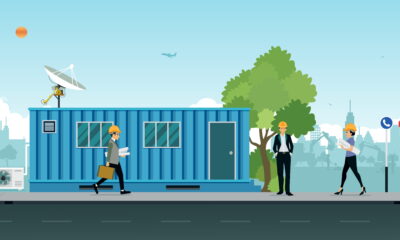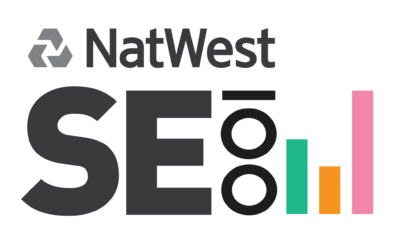

Environment
Environmental Land Development: Strategies for Sustainable Growth
Environmental land development focuses on creating spaces that balance human progress with ecological preservation. This approach ensures that the development of land today doesn’t hinder the well-being of future generations, fostering harmony between urban growth and nature.
Core Principles of Environmental Land Development
- Sustainable Land Use
Efficient use of land is the cornerstone of sustainable growth. Strategies such as mixed-use developments—combining residential, commercial, and recreational spaces—help minimize urban sprawl and preserve natural habitats. - Conservation-Oriented Planning
Setting aside green spaces within developments allows ecosystems to thrive. These preserved areas act as natural buffers, improving air quality, supporting biodiversity, and mitigating climate change effects. - Green Infrastructure Integration
Incorporating features like rain gardens, green roofs, and permeable pavements enhances stormwater management, reduces urban heat, and improves the overall quality of life in developed areas. - Low-Impact Development (LID)
By managing water runoff at its source through techniques like bioswales and retention ponds, low-impact development reduces flooding risks while protecting water quality.
Strategies for Sustainable Growth
To implement environmental land development effectively, adopting clear strategies is essential. Here are key approaches:
1. Community-Centric Planning
Engaging local communities in the planning process ensures that developments meet their needs while fostering long-term stewardship. When residents are involved, they’re more likely to support projects that reflect shared values.
2. Energy-Efficient Design
Integrating renewable energy sources such as solar panels and wind turbines into development projects reduces reliance on fossil fuels and contributes to cleaner environments. Energy-efficient buildings also lower utility costs, benefiting both developers and residents.
3. Nature-Based Solutions
Designing developments to work with nature, rather than against it, is key to sustainability. Strategies like planting native vegetation, creating wildlife corridors, and restoring wetlands enhance ecological resilience.
4. Adopting Smart Growth Principles
Smart growth promotes walkable neighborhoods, reduces dependence on cars, and encourages high-density housing near transit hubs. These practices improve urban livability and reduce environmental impacts.
5. Environmental Engineering Services
Partnering with environmental engineering services and utilizing land development services in areas like Jacksonville, Orlando, Miami, and other cities across Florida ensures developments comply with regulations while integrating innovative solutions. These experts can assess potential impacts, design systems to manage resources efficiently, and provide ongoing environmental monitoring.
Florida as a Model for Environmental Land Development
Florida, with its unique geography and rich biodiversity, has become a prominent example of environmental land development. The state is home to critical ecosystems, such as the Everglades, wetlands, and coastal areas, which require thoughtful planning and conservation efforts. Development in Florida often focuses on balancing economic growth with ecological preservation, making it a leader in sustainable practices.
One successful approach in Florida is the integration of wetlands restoration into urban and suburban developments. Developers in regions like South Florida frequently design communities with large-scale stormwater management systems that mimic natural wetlands. These systems not only control flooding but also filter pollutants, enhancing water quality and supporting local wildlife. The inclusion of green spaces and preserved areas within residential and commercial developments reflects the state’s commitment to protecting its natural resources while accommodating population growth.
Cities like Jacksonville and Orlando have embraced innovative environmental land development practices. In Jacksonville, projects often include coastal restoration efforts to combat erosion and rising sea levels, ensuring long-term sustainability for the city’s booming population. Meanwhile, Orlando has focused on incorporating green infrastructure into urban spaces, such as creating parks with stormwater retention basins and enhancing public transit systems to reduce carbon footprints. These initiatives not only protect Florida’s environment but also improve the quality of life for residents by fostering healthier, more resilient communities.
Additionally, Florida has adopted stringent regulations to ensure sustainability in land use. Programs like the Florida Forever land acquisition initiative focus on purchasing and protecting vital ecosystems from overdevelopment. These efforts are often guided by Environmental Engineering Services, which play a critical role in designing and implementing projects that align with sustainability goals and meet the state’s environmental standards. As a result, Florida demonstrates how environmental land development can address challenges such as rising sea levels, urban sprawl, and habitat loss, providing a blueprint for other states to follow.
Why Environmental Land Development Matters
A growing number of environmental concerns are affecting our planet. We all have an obligation to take care of the planet, which requires us to live greener lifestyles.
Environmental land development provides a practical way to address these concerns. By prioritizing sustainability in land use, we can reduce pollution, conserve natural resources, and create communities that thrive in harmony with nature. This approach benefits not only the environment but also the people who live and work in these areas.
Benefits of Environmental Land Development
Sustainable land development yields benefits for the environment, communities, and economies alike:
- Preservation of Natural Resources: By prioritizing conservation, resources like clean water, fertile soil, and forests remain available for future generations.
- Enhanced Community Well-Being: Access to green spaces promotes physical and mental health while reducing urban stress.
- Economic Growth: Developments that integrate sustainability often attract higher property values, eco-conscious businesses, and long-term investors.
- Resilience to Climate Change: Sustainable developments are better equipped to withstand the challenges posed by extreme weather events and shifting climates.
Overcoming Challenges in Sustainable Development
While the benefits of environmental land development are clear, challenges can arise:
1. Balancing Growth and Conservation
Striking a balance between economic development and environmental preservation requires innovative solutions. For example, developers can incorporate vertical gardens or rooftop farms in urban settings to maximize green space.
2. Regulatory Hurdles
Navigating environmental regulations can be complex, but it’s an essential part of ensuring that projects align with sustainability goals. Collaboration with environmental engineering services can simplify compliance.
3. Community Resistance
At times, communities may resist change, particularly if they perceive it as disruptive. Transparent communication and education about the long-term benefits of sustainable development can help address these concerns.
4. Upfront Costs
Sustainable practices often require higher initial investments, but the long-term savings on energy, water, and maintenance can outweigh these costs.
Steps Toward a Sustainable Future
Environmental land development requires a shift in mindset and methodology. Developers, urban planners, and governments must work together to implement these practices on a larger scale:
- Promote Public Awareness: Educating communities about the benefits of sustainability builds support for green initiatives.
- Incentivize Green Practices: Offering tax breaks or grants for environmentally friendly projects encourages wider adoption.
- Foster Innovation: Encouraging the development of new technologies and materials can make sustainable practices more accessible and cost-effective.
Conclusion
Environmental land development is a necessary step toward creating a future that thrives on balance, innovation, and community well-being. By incorporating conservation, green infrastructure, and smart growth principles, we can pave the way for a world where development coexists harmoniously with nature. The collaboration of communities, developers, and environmental engineering services is key to achieving this vision of sustainable growth. Together, we can build a resilient and thriving future for all.


 Environment10 months ago
Environment10 months agoAre Polymer Banknotes: an Eco-Friendly Trend or a Groundswell?

 Environment11 months ago
Environment11 months agoEco-Friendly Home Improvements: Top 7 Upgrades for 2025

 Features9 months ago
Features9 months agoEco-Friendly Cryptocurrencies: Sustainable Investment Choices

 Features10 months ago
Features10 months agoEco-Friendly Crypto Traders Must Find the Right Exchange





























